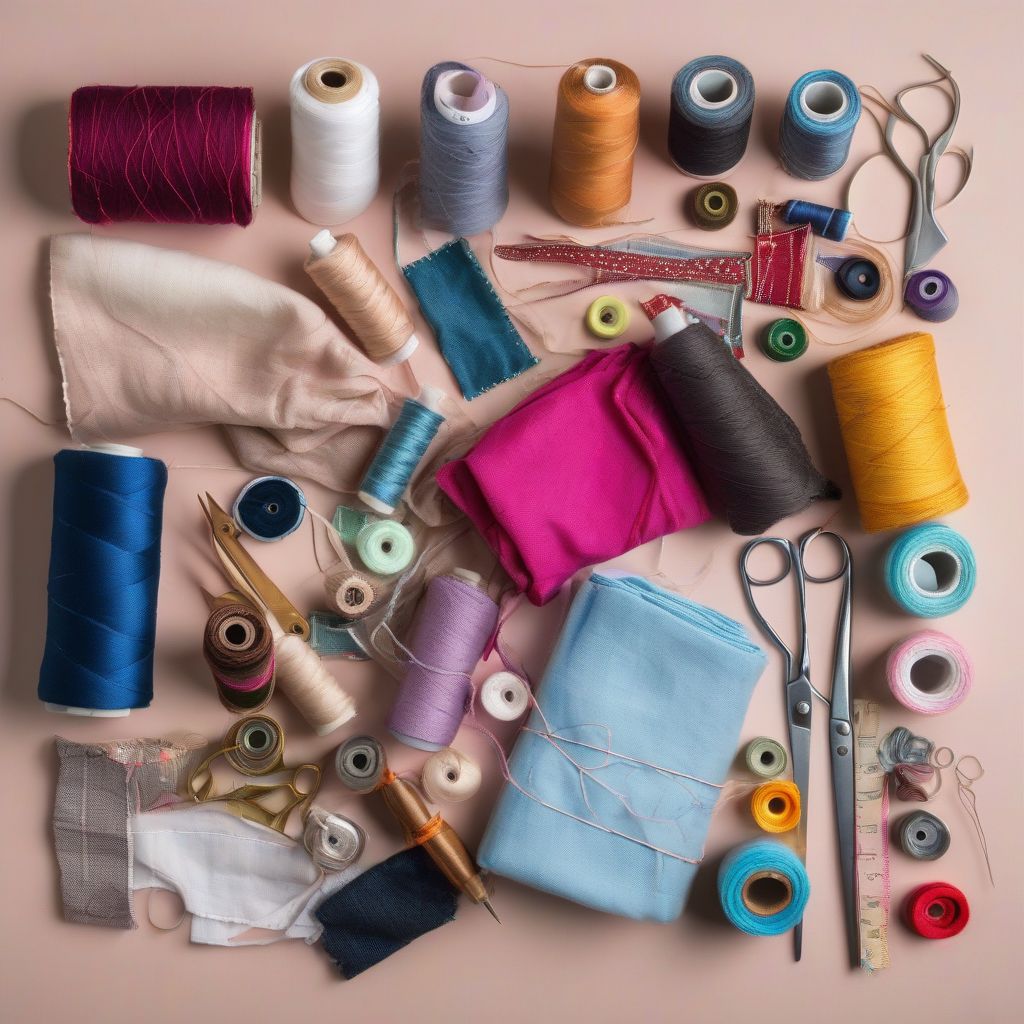Have you ever looked at an old shirt or a pair of jeans destined for the donation bin and thought, “I could make something amazing out of that”? That, my friends, is the spirit of upcycling! It’s a creative, sustainable, and empowering approach to fashion that’s good for the planet and your wardrobe. But how can you share this passion with others and inspire them to transform trash into treasure?
That’s what we’re diving into today! Get ready to learn how to teach others about the magic of upcycling and DIY fashion. Whether you’re a seasoned pro or just starting, we’ll explore fun and effective ways to spread the love for sustainable style.
Understanding Your Audience: Who Are You Teaching?
Before you jump into teaching, take a moment to consider who you’ll be working with. Are they:
- Complete Beginners: They might need a gentle introduction to basic sewing skills, fabric types, and simple upcycling projects.
- Crafty Enthusiasts: They may already have some DIY experience and be eager to learn more advanced techniques and tackle complex upcycling challenges.
- Eco-Conscious Individuals: They’re driven by sustainability and excited to learn how upcycling can reduce textile waste and promote eco-friendly fashion choices.
Understanding your audience will help you tailor your teaching methods and project choices to their skill levels and interests, making the learning experience enjoyable and rewarding for everyone involved.
Getting Started: Essential Tools and Materials
You don’t need a professional atelier to teach upcycling! Here’s a list of must-have tools and materials that are easy to find and budget-friendly:
Basic Sewing Kit:
- Fabric scissors: Sharp fabric scissors are essential for clean, precise cuts, which are crucial for professional-looking upcycled garments.
- Sewing needles (various sizes): Having a range of needle sizes ensures you’re prepared to work with different fabric weights and thicknesses.
- Thread (various colors): Matching thread to your fabric is key for a polished look, while contrasting thread can add a fun, decorative touch.
- Seam ripper: Mistakes happen, and a seam ripper is your best friend for quickly and easily undoing stitches.
- Measuring tape: Accurate measurements are crucial in sewing and upcycling, ensuring your finished pieces fit perfectly.
- Pins: Pins hold fabric in place while you sew, preventing shifting and ensuring even seams.
Additional Useful Tools:
- Rotary cutter and mat: These tools make cutting fabric a breeze, especially for larger projects or multiple layers.
- Fabric glue: A handy alternative to sewing for attaching embellishments, hems, or small appliqués.
- Iron and ironing board: Pressing seams and wrinkles is essential for a professional-looking finish.
- Tailor’s chalk or fabric markers: These tools allow you to make precise markings on fabric for cutting, sewing, and adding design elements.
Upcycled Materials:
Encourage your students to bring their own pre-loved clothing items to upcycle. This not only personalizes their learning experience but also reinforces the concept of giving old clothes a new life.
 Upcycling Clothes
Upcycling Clothes
Igniting Creativity: Project Inspiration and Ideas
One of the most exciting aspects of upcycling is the endless creative possibilities! Here are a few ideas to get your students inspired:
Beginner-Friendly Projects:
- T-shirt Tote Bag: Transform an old T-shirt into a stylish and eco-friendly tote bag.
- Denim Patches: Cut out interesting shapes or designs from old denim jeans and stitch them onto tote bags, jackets, or backpacks for a personalized touch.
- Headbands from Scarves: Give old scarves a new life by turning them into trendy headbands.
Intermediate Projects:
- Shirt into a Skirt: Upcycle an oversized button-down shirt into a fashionable skirt.
- Jeans into Shorts: Give a pair of old jeans a summery makeover by turning them into stylish shorts.
- Sweater Pillow Covers: Transform cozy sweaters into unique and comfortable pillow covers.
Advanced Projects:
- Quilted Jacket from Denim Scraps: Upcycle denim scraps into a patchwork masterpiece by creating a one-of-a-kind quilted jacket.
- Dress from Vintage Curtains: Breathe new life into vintage curtains by transforming them into a flowing and elegant dress.
- Rug from Fabric Scraps: Turn fabric scraps into a beautiful and functional rug using various weaving or braiding techniques.
Pro Tip: Encourage students to gather inspiration from fashion magazines, online platforms like Pinterest, or even their own wardrobes to spark unique upcycling ideas.
Teaching Upcycling Techniques: Step-by-Step Guidance
When teaching upcycling techniques, clear and concise instructions are key. Consider these tips:
- Break down complex tasks into smaller, manageable steps.
- Use a combination of visual aids, demonstrations, and hands-on practice.
- Provide clear and detailed instructions, both verbally and in writing.
- Be patient and encouraging, offering guidance and support throughout the learning process.
- Create a positive and collaborative learning environment where students feel comfortable asking questions and sharing ideas.
Example: How to Sew a Basic Seam
- Pinning: Place the two pieces of fabric together, right sides facing (the “pretty” sides that will be visible on the outside of your finished project should be facing each other). Use pins to hold the fabric in place, inserting them perpendicular to the edge you’ll be sewing along.
- Threading the Needle: Cut a length of thread, approximately 18 inches long. Thread your needle, making sure to knot one end securely.
- Starting the Seam: Insert the needle about ¼ inch from the edge of the fabric, pushing it through both layers. Bring the needle back up through the fabric, creating a small stitch.
- Backstitch: To secure the seam, sew backward over the first few stitches. This reinforces the beginning of the seam and prevents it from unraveling.
- Continue Sewing: Continue sewing along the pinned line, making small, even stitches. Keep the stitches consistent in length and tension for a neat and professional look.
- Knotting the Thread: Once you reach the end of the seam, backstitch a few stitches to secure it. Then, knot the thread securely close to the fabric.
Building a Sustainable Mindset: Beyond the Basics
Teaching upcycling goes beyond just sewing skills—it’s about fostering a sustainable mindset and appreciating the value of pre-loved clothing. Here are ways to encourage this:
- Discuss the environmental impact of fast fashion: Help your students understand how upcycling reduces textile waste and promotes eco-conscious fashion choices.
- Share resources on ethical and sustainable fashion brands: Introduce your students to brands that prioritize ethical production, fair labor practices, and sustainable materials.
- Encourage creativity and personalization: Remind students that upcycling allows them to express their individuality and create unique, one-of-a-kind pieces they’ll cherish for years to come.
- Organize clothing swaps or upcycling challenges: Create opportunities for students to share their creations, exchange ideas, and inspire each other to embrace sustainable fashion practices.
Conclusion
Teaching others about upcycling and DIY fashion is a rewarding experience that combines creativity, sustainability, and empowerment. By breaking down techniques, offering project inspiration, and fostering a sustainable mindset, you can empower others to transform their relationship with clothing and embrace the art of upcycling.
So gather your materials, ignite your creativity, and share the joy of upcycling with the world. You’ll be amazed at the unique and stylish creations you and your students can bring to life! Now, we’d love to hear from you. Share your favorite upcycling tips, project ideas, or any questions you might have in the comments below!
[amazon bestseller=”sewing machine”]
